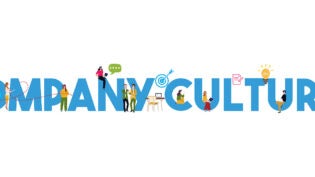Winning Companies Lead with a New Culture Mindset
By: Marty Zwilling

With today’s interactive social media and the real-time Internet, both customers and employees see inside your company easily, so you can’t hide your real company culture. At the same time relationship perceptions have become the biggest drivers to customer loyalty and employee engagement. Thus in every business, big or small, culture can make or break your success.
Examples of companies well known for their winning cultures inside and out include Apple and Google. In both cases, their products are not generally cheaper or unique, but the mindset behind how they do what they do, and think what they think, makes them stand out. Others, by most accounts including Blockbuster and JCPenney, lost their focus on culture, and paid a heavy price.
In fact, most entrepreneurs and executives today recognize the importance of building and maintaining the right culture, but many are not so clear on how to do it, or assessing where they stand in the process. To that end, I was impressed with the specifics provided in a new book, “Nimble, Focused, Feisty,” by Sara Roberts, a “go-to” expert on organizational transformation.
What I have seen in startups correlates well with Roberts’ evidence that there are three basic elements of a winning culture mindset today—fast is better than big, possibility over profitability, and being passionately outward-directed to customers and employees. I support her outline of several guiding principles for any company on how to achieve and maintain this mindset:
- Remain nimble and ready to pivot. Winning organizations have a culture of no expectation of always doing what they are currently doing. They know how rapidly things change, and that today’s positive reality may not carry them to where they ultimately want to go. They are always on the lookout for new opportunities and innovations.
- Structure for speed in making changes. Speed in any organization is largely a function of hierarchy, trust, and the ability to make decisions quickly across the organization. The primary key is establishing a culture that relies on values, rather than rules, to guide every action. Teams and individuals at all levels must be motivated to make decisions.
- Solve problems by co-creating and collaborating. Effective collaboration requires bringing together a variety of contributors who trust each other to get to the best solution. These days, that includes the initiative to bring up issues and tap the wisdom of “crowds” through social media, employee forums, and listening to industry influencers.
- Lead with purpose as a balance to profit. Increasingly, the landscape is shifting from an emphasis on “how” to an appreciation of “why,” both inside and outside the company. If executives don’t see social good or higher purpose as important to success, customers and employees will remind them – overtly by feedback, or passively by deserting them.
- Maintain a customer-centric focus. Businesses oriented primarily toward near-term shareholder value make themselves vulnerable in the long term. If you focus on what’s best for the customer, both near-term and long-term, you will see where customers are headed, and can plan change versus crisis reaction. Talk with real customers constantly.
- Find leaders who are courageous connectors. Courageous leaders acknowledge doubt and gaps, but still make decisions with confidence. Connector leaders enable their teams to navigate other organizations effectively, connect them with required resources, and expand their sense of possibilities and purpose. Set the culture by example.
- Build teams with people who get things done. A nimble organization needs doers and makers. Makers are not scared of taking action; in fact they’re biased toward action. They ask forgiveness rather than ask for permission, are motivated by results, and naturally collaborative. Leaders help most by not putting barriers in the way of their people.
- Winning cultures need consistent people practices. The best team cultures are built and maintained by systematic and deliberate hiring. Don’t hire only under duress, or settle for less than the best fit. Involve the team in selecting the best fit, culture matching, and getting “buy-in” from all the right players. Motivate with meaning, not just money.
For companies to remain successful in this new era, they need a culture that is proactive rather than defensive. It’s purposely designed, leveraged, and honed to be nimble in addressing change, customers, and integration of purpose with business value. How long has it been since you have reviewed your culture at the employee and customer level? Surprises are expensive.












